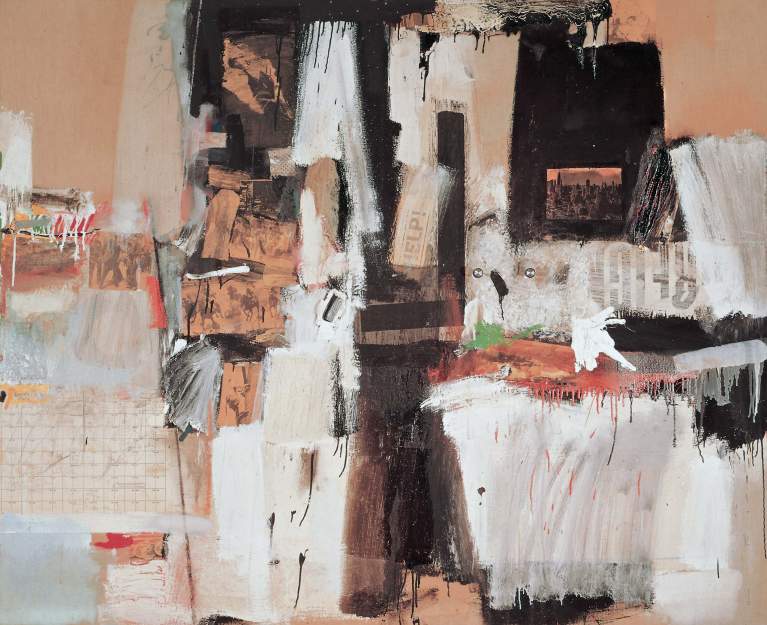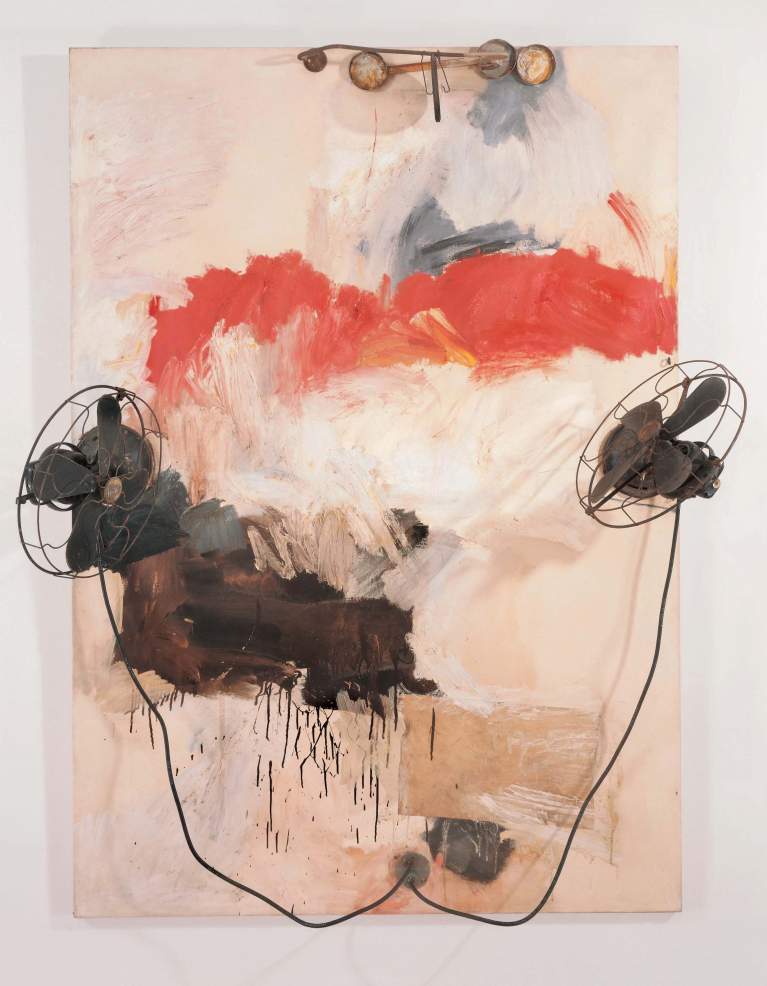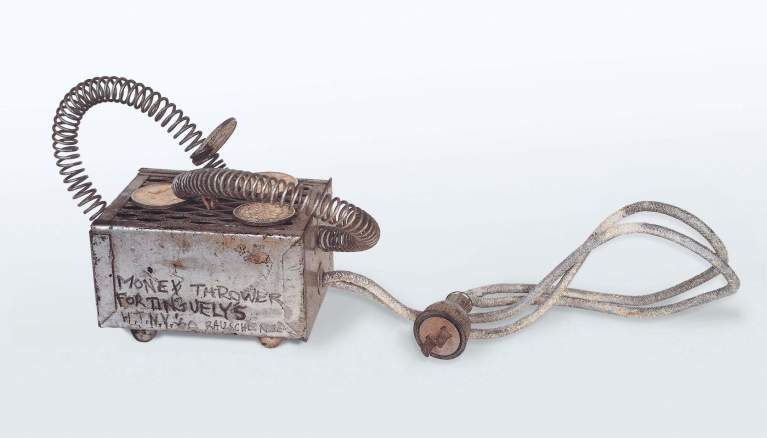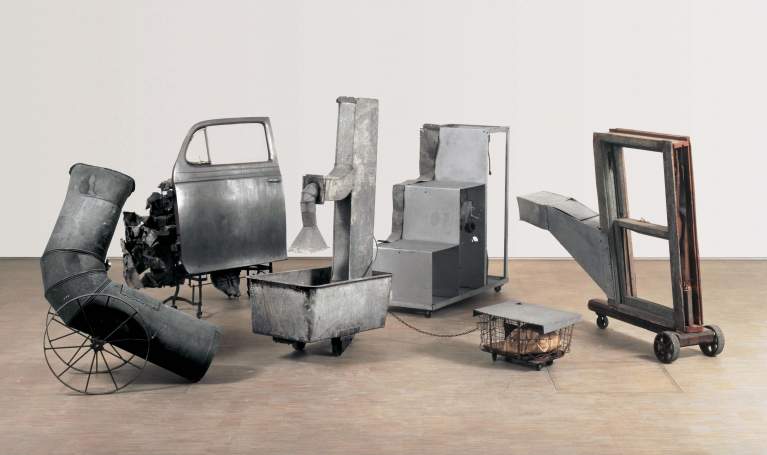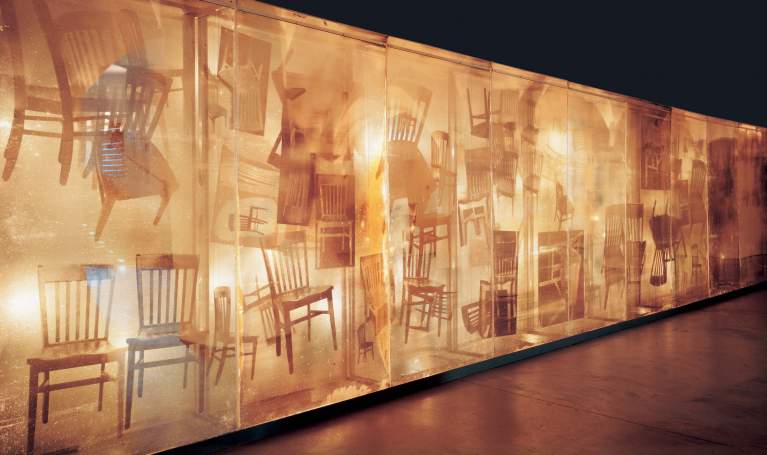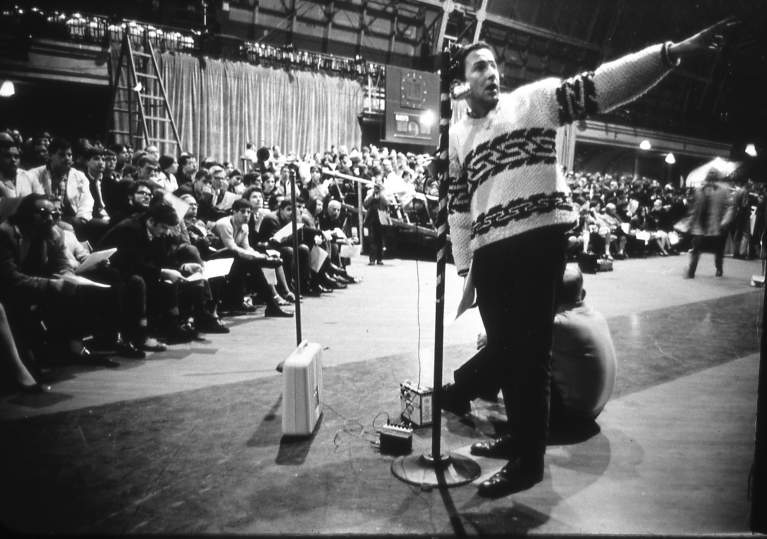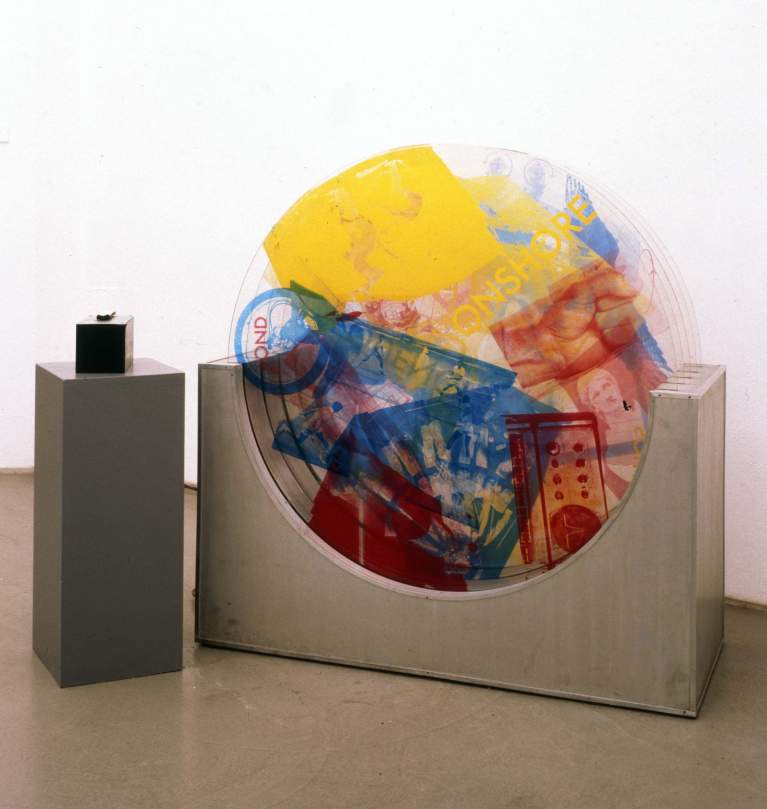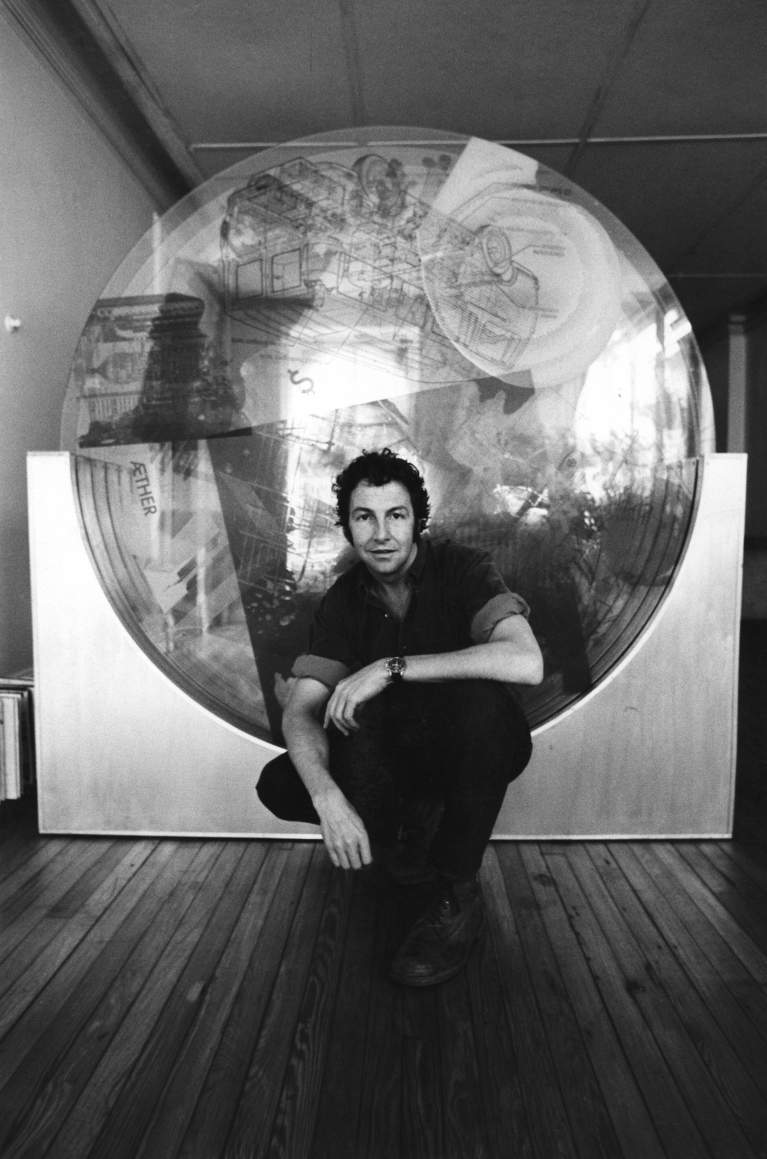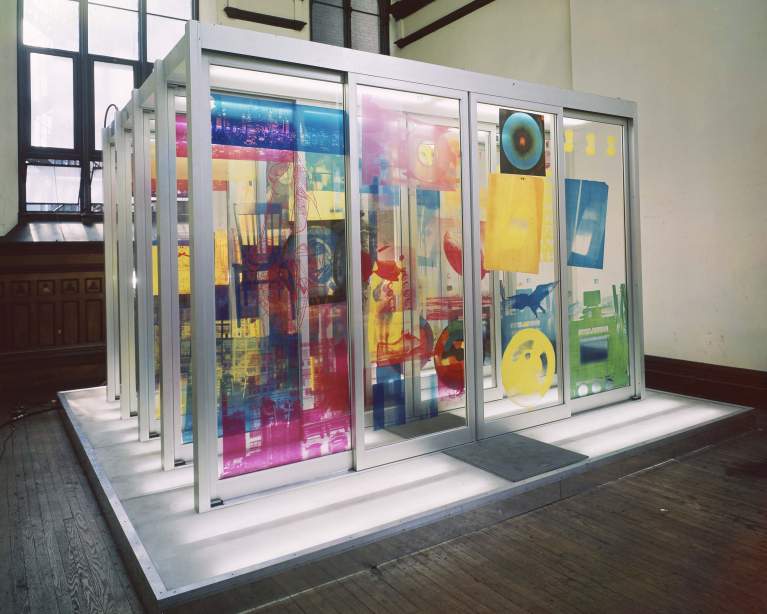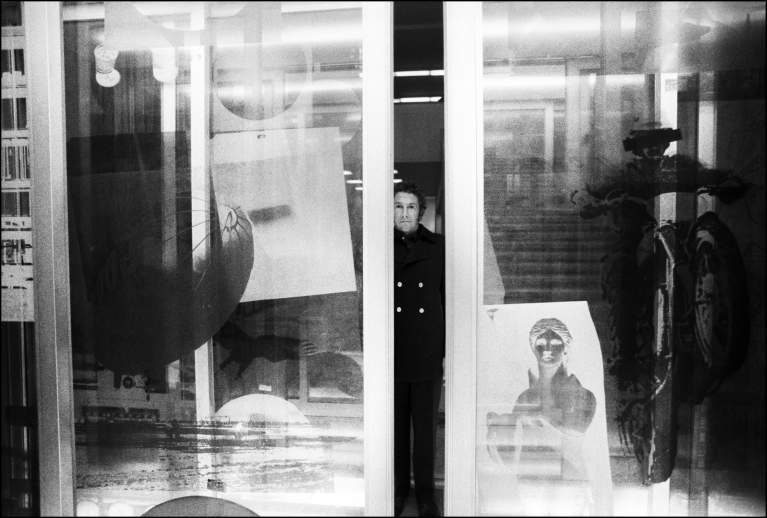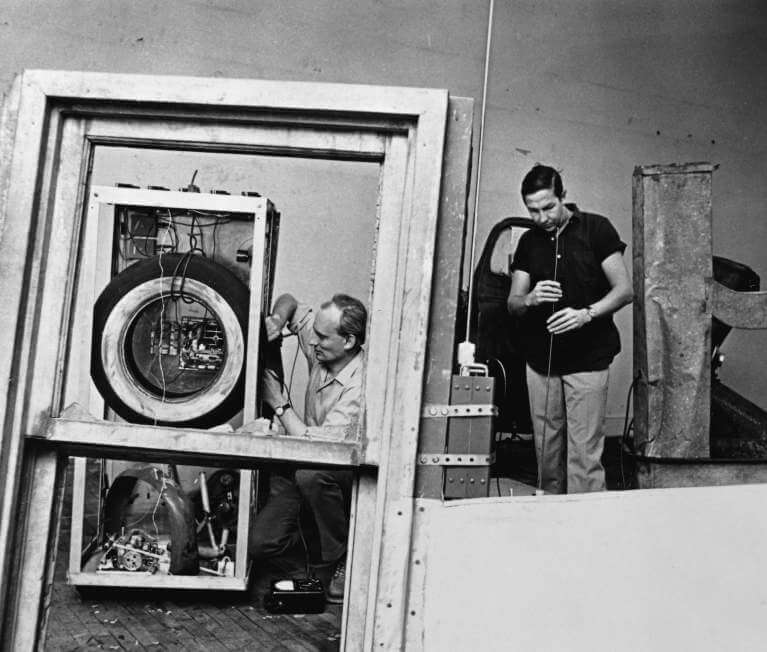
Rauschenberg and engineer Billy Klüver working on Oracle (1962–65) in Rauschenberg’s Broadway studio, New York, 1965. Photo: Larry Morris/The New York Times/Redux Pictures
Art and Technology, 1959–98
Among the collaborative ventures that brought Rauschenberg emphatically outside the confines of his studio were his experimental works in art and technology. The artist’s interest in bringing technology into his art was already evident in some of the early Combines that integrated working appliances, such as radios, fans, electric lights, and clocks, allowing sound, motion, light, and the passage of time to quite literally be incorporated into his art.
Through his participation in the Swiss artist Jean Tinguely’s kinetic environment, Homage to New York in 1960, Rauschenberg began working with Bell Laboratories research scientist, Billy Klüver. In collaboration with Klüver, Rauschenberg realized some of his most ambitious technological works, including the sound-producing sculptural environment, Oracle (1962–65), as well as Soundings (1968), a monumental light installation responsive to ambient sound. Both works were meant to be experienced by the audience spatially and appeal to the senses beyond the purely visual.
In 1966, Rauschenberg and Klüver, together with artist Robert Whitman and engineer Fred Waldhauer, founded Experiments in Art and Technology (E.A.T.), New York, an organization that sought to make technology accessible to artists by arranging collaborations with engineers. In the same year and due to their interest in the potential application of technology for theater, they produced 9 Evenings: Theater & Engineering, an event that brought together visual artists, dancers, choreographers, scientists, and engineers, which resulted in technologically sophisticated performance works.
While Rauschenberg’s preoccupation with technology-based art reached its height during the 1960s, the artist would continue to periodically utilize technology in his art making through the 1990s. Among his later technology-based works was the series Eco-Echo (1993). Made following his attendance at the Earth Summit in Rio de Janeiro in 1992, the sonar-activated windmills referred to the artist’s environmental concerns and his interest in ecologically responsible sources of power.

